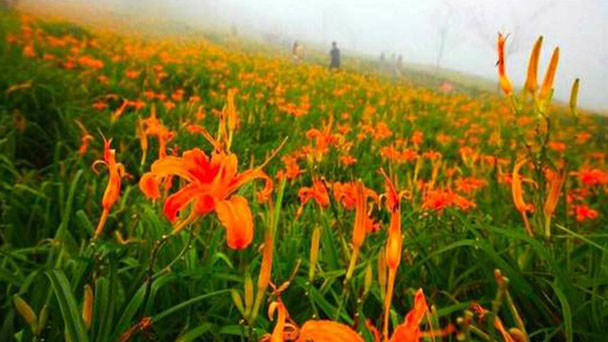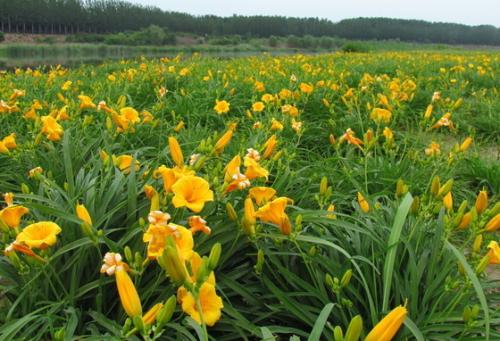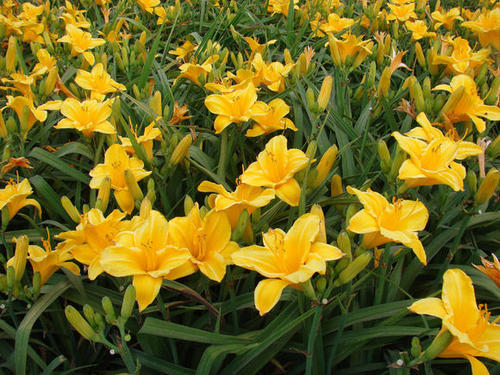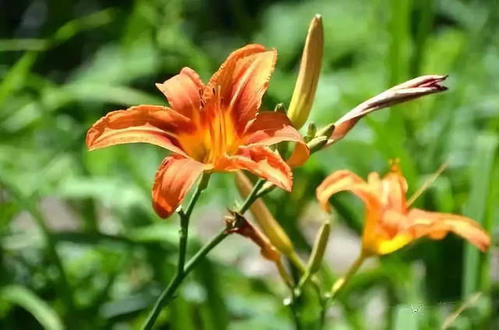Hemerocallis fulva profile
Written by Maggie
Nov 25 2020

Hemerocallis Fulva is mainly produced in China, but it has not been improved for a long time. After the 1930s, some botanical gardens and garden lovers in the United States collected plants of the genus Hemerocallis fulva produced in China, Japan and other countries and carried out cross breeding. Now more than 10,000 species of Hemerocallis fulva have been bred. It has become an important ornamental and cut flower, and is also the one with the most varieties in liliaceae. Meanwhile, Hemerocallis Fulva is also the mother flower of China.
Hemerocallis Fulva picture

Hemerocallis Fulva morphological characteristics
Hemerocallis Fulva is a perennial herb. Its rhizomes are short, thick, with fleshy fibrous roots.Basal plexus, strip lanceolate, 30 ~ 60cm long and 2.5cm wide, abaxially covered with white powder. Scapes grow longer than leaves with large orange flowers in summer, reaching more than 1m high;Panicles terminal, with 6 to 12 flowers, pedicels ca. 1cm long, bracts small lanceolate. The length of the flower is 7 ~ 12cm, and the base of the perianth is thick and short funnel-shaped, as long as 2.5cm. The perianth is 6 pieces, spreading and rewinding outward, 3 pieces of the outer wheel are 1 ~ 2cm wide. 3 pieces of the inner wheel are up to 2.5cm wide, and the edges are slightly undulate;Stamens 6, filaments long, with another larynx. Ovary is superior, style slender.
The main characteristics of hemerocallis fulva are: the root is succulent, and the middle and lower part has a spindle expansion. Leaves are generally wider. The flower opened in the morning and died at night, without fragrance, orange-red to orange-yellow. The lower part of the inner flower lobe generally had inverted. These characteristics may be distinguished from other species in this country.The fruiting period is From May to July.
Hemerocallis Fulva geographical distribution
Hemerocallis Fulva is native to China, Siberia, Japan and Southeast Asia. Hemerocallis Fulva is strong and hardy, and can overwinter in north China. It has trong adaptability, likes wet and drought, sunshine and half shade. It is not selective to the soil, but it is appropriate to use moist soil rich in humus and well drained. It is adapted to grow at altitudes of 300-2500 m.

Hemerocallis Fulva main value.
Hemerocallis Fulva medicinal value
Hemerocallis Fulva function: clear heat and diuresis, cool blood and stop bleeding, mumps, jaundice, cystitis, difficulty in urinating, lack of milk, irregular menstruation, bleeding in the stool.External use for mastitis.
Hemerocallis Fulva ornamental value
Hemerocallis Fulva has bright colors, easy cultivation, early germination in spring, and beautiful green leaves. In the garden many clumps or in the flower border, roadside planting. Hemerocallis class bears half shade, but also can do the sparse woodland by the plant.
Hemerocallis Fulva other values
Hemerocallis Fulva was a commonly used dye before the advent of modern chemical dyes. In addition, Hemerocallis Fulva is very sensitive to fluorine. The tips of Hemerocallis Fulva leaves turn reddish brown when the air is polluted with fluorine, so they are often used as a pointer to monitor the environment for fluorine contamination.

Latest Updated
- Benefits of Bugleweed - 7 Science-backed Health Benefits
- Bugleweed Dangers & Side Effects - Is It Poisonous?
- How to Plant Evergreen Trees - What You Should Know
- When to Plant Evergreens - Grow Guide for Evergreen Trees
- 12 Wonderful Evergreen Shrubs for Your Garden
- 12 Popular Evergreen Plants with Pictures for Beginners
- When And How To Prune A Lilac Bush Like a Pro
- How to Grow & Care for Lilac Vine (Hardenbergia Violacea)
- Japanese Lilac Tree (Syringa Reticulata) Care & Propagation Guide
- Shumard Oak Pros and Cons - What to Know
Popular Articles
- Winter maintenance of Antirrhinum Majus
- How to Grow Terminalia Mantaly Tree
- How to Grow and Care for Crossostephium Chinense
- How to grow Antirrhinum Majus in spring
- Peristeria Elata (Dove Orchid) Profile: Info & Care Guide
- Underwatered Snake Plant (Sansevieria Trifasciata) - Signs And How To Fix
- How to Care for Brazilian Jasmine Plant (Mandevilla Sanderi)
- How to Grow & Care for Graptopetalum Purple Delight in Summer
- Rosa Chinensis (China Rose): Plant Growing & Care Tips
- How to Care for Baby Sun Rose (Aptenia Cordifolia)